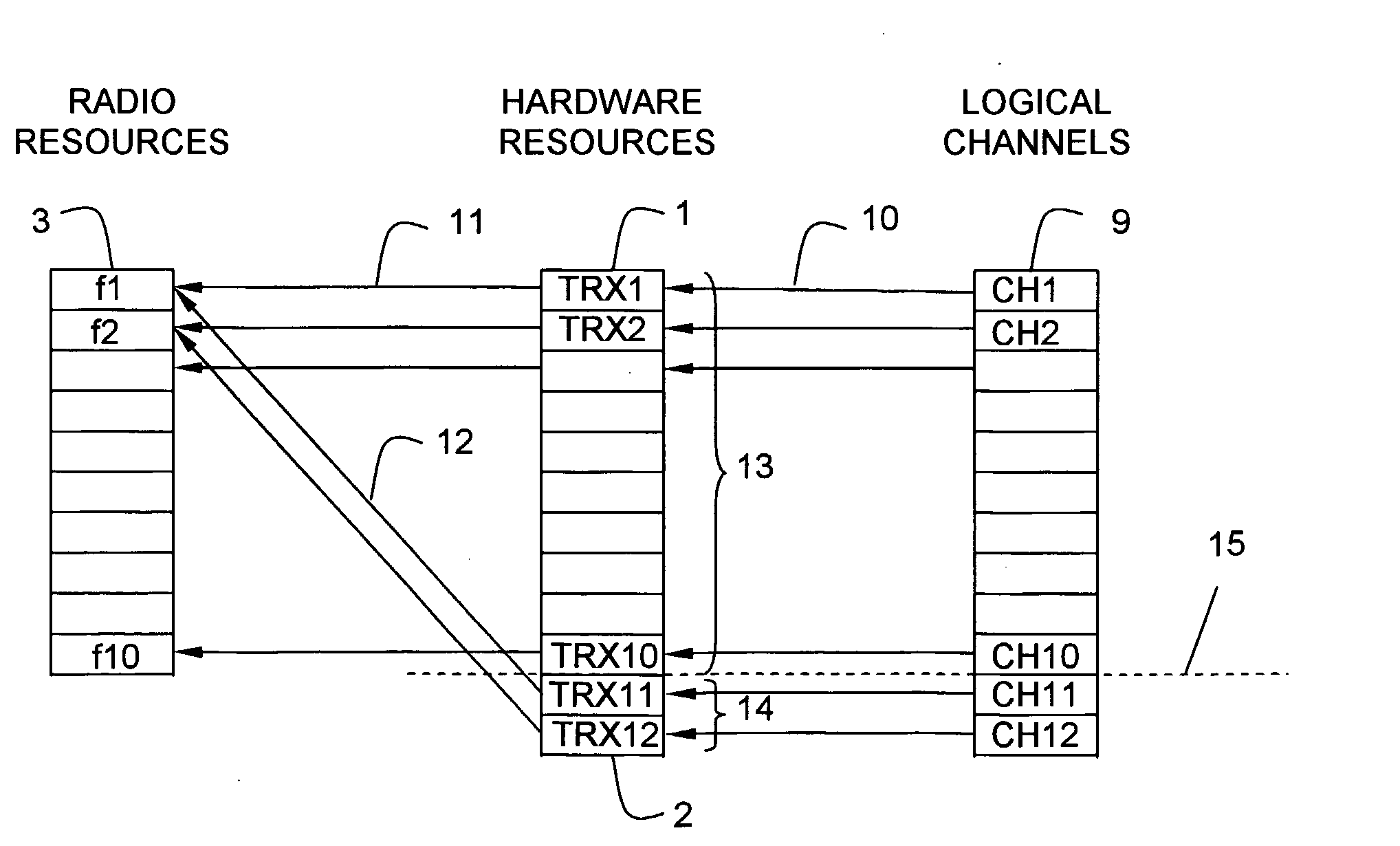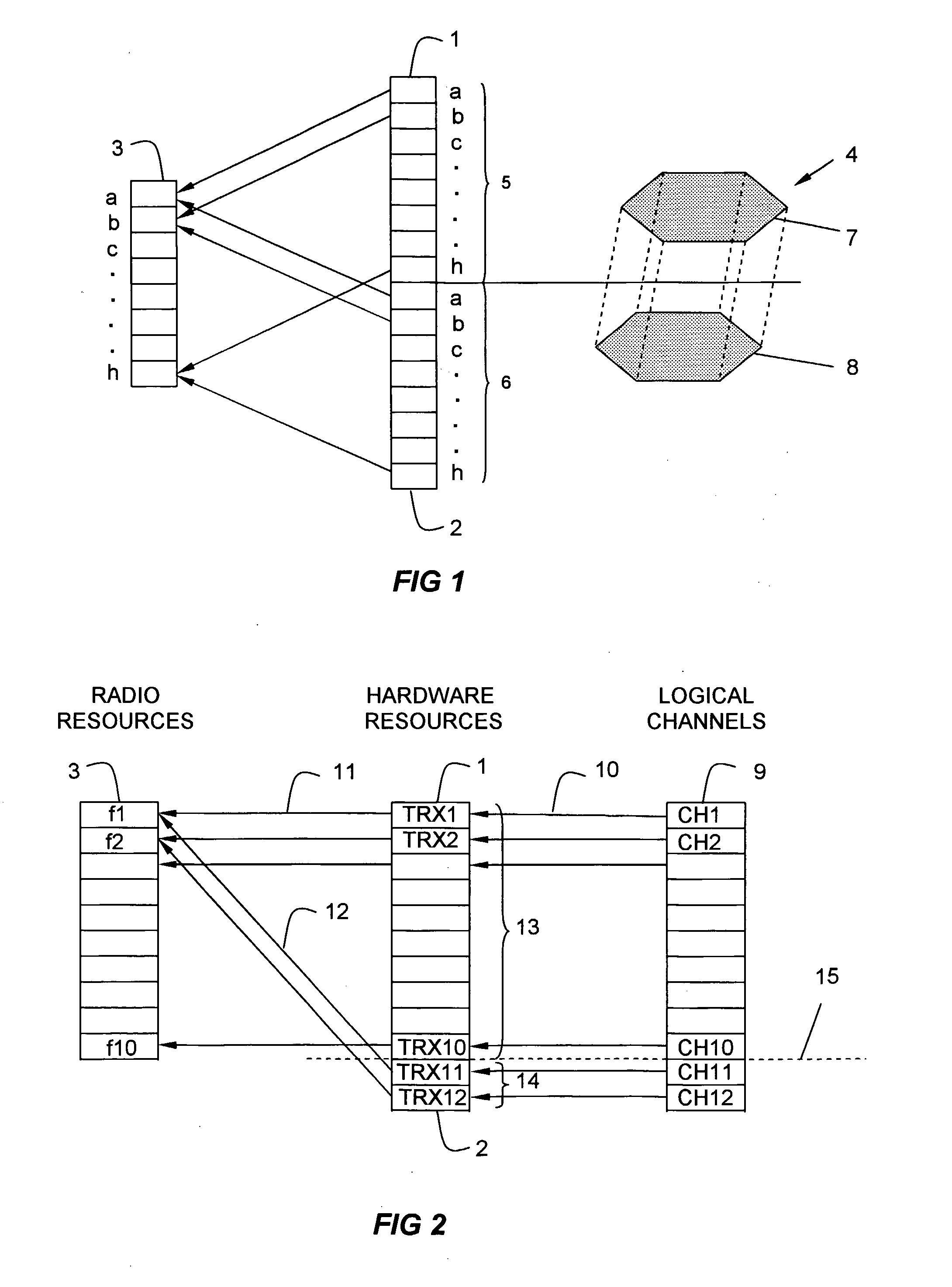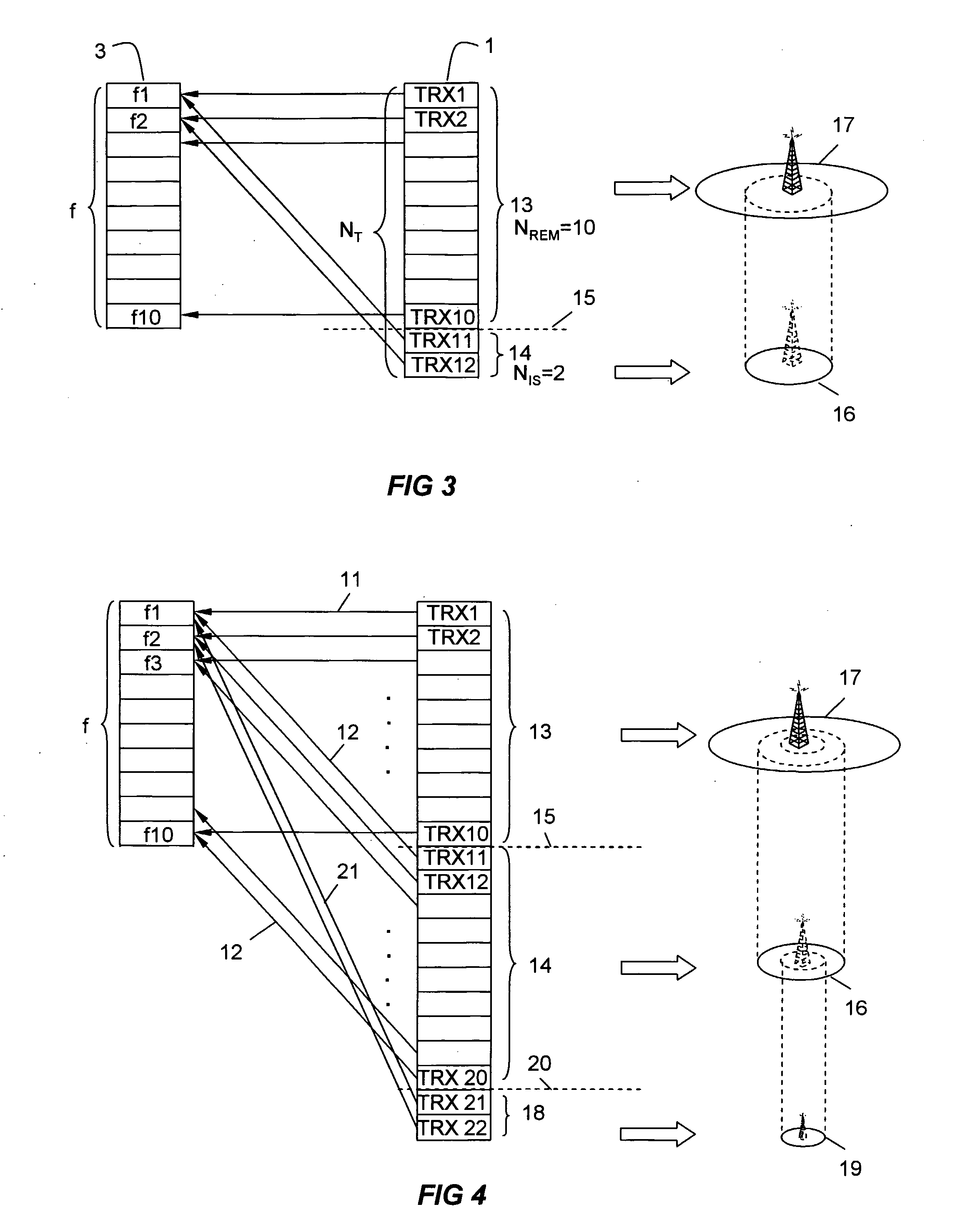Channel Allocation for Channel Allocation Tiering
a channel allocation and channel allocation technology, applied in the field of channel allocation methods and channel allocation systems, can solve the problems of affecting the interference levels in the other tiers, extreme traffic peaks can occur, intra-cell co-channel interference is generated, etc., and achieves the effect of maximizing system capacity and service performan
- Summary
- Abstract
- Description
- Claims
- Application Information
AI Technical Summary
Benefits of technology
Problems solved by technology
Method used
Image
Examples
Embodiment Construction
[0025]The invention will primarily be described with reference to the GSM system. In a GSM system the least hardware resource is a time slot on a transceiver TRX and the least radio resource is a time slot on a frequency. In GSM there are 8 time slots in each TDMA frame, so during each TDMA frame period, transmission and reception of at most 8 logical channels, e.g. traffic channels TCHs, can be performed on a given TRX and a given frequency. In subsequent TDMA frames, communication can be carried out with the same set or a different set of 8 logical channels on the same or a different TRX using the same or a different frequency. Although the exact mapping of logical channels to hardware resources to radio resources may vary from time slot to time slot and from TDMA frame to TDMA frame, the principle of the invention remains the same. Hence, for the sake of clarity, the invention is described below as a snap shot during a single time slot in a TDMA frame. Its generalization to the d...
PUM
 Login to View More
Login to View More Abstract
Description
Claims
Application Information
 Login to View More
Login to View More - R&D
- Intellectual Property
- Life Sciences
- Materials
- Tech Scout
- Unparalleled Data Quality
- Higher Quality Content
- 60% Fewer Hallucinations
Browse by: Latest US Patents, China's latest patents, Technical Efficacy Thesaurus, Application Domain, Technology Topic, Popular Technical Reports.
© 2025 PatSnap. All rights reserved.Legal|Privacy policy|Modern Slavery Act Transparency Statement|Sitemap|About US| Contact US: help@patsnap.com



